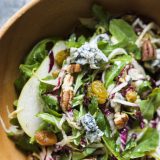In our experience, a mandoline is not the best tool for slicing:
- Hard- or soft-cooked eggs
- Cured meats
- Semifirm cheeses
- Squash
- Soft, ripe fruits, including very ripe tomatoes
When it comes to even cuts, no kitchen tool can rival the mandoline, the paddle-like slicing blade that can quickly reduce fruits and vegetables to slices, slivers, rounds, ribbons and shreds. Even a food processor’s slicing disk can’t compete. In our testing, a mandoline yielded slices four times thinner than the processor.
At one time, the only mandolines available were large French stainless-steel models that sold for $200 or more. Today, mandolines are an affordable addition to any kitchen, with quality options costing as little as $30. At Milk Street, we spent a few weeks working with our favorite mandoline—the no-frills Benriner—while develop- ing two shaved salads. In the process, we noted several tips that helped us make better use of our mandoline, including safety practices and ways to make slicing simpler.
First and foremost, safety. The sharp blade of a mandoline can be intimidating. Using the hand guard that comes with many models is a good start, but wearing a cut-resistant glove made us even more comfortable. Look for one with a snug fit.
A few more practices make slicing easier and safer. For rounded fruits and vegetables, first create a at edge by cutting off a small piece before slicing. Use firm, even pressure to slide food smoothly against the blade. Look for a natural handle—the stem end of a radish or the root end of radicchio, for instance—to hold when slicing. And finally, know when to stop; don’t attempt to slice until there is no more to slice.
Preparation
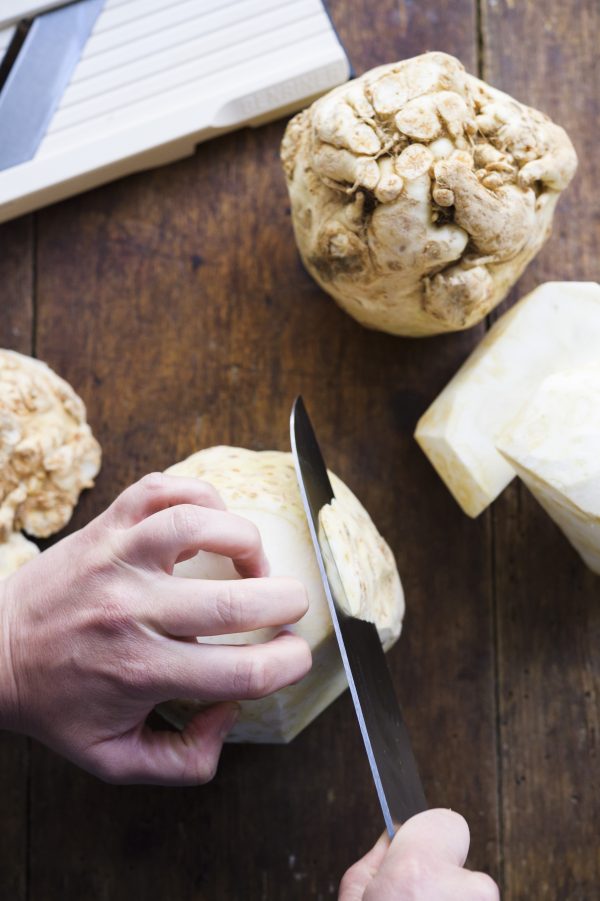
Prep Work: To slice large vegetables like celery root or cabbage, the item must first be cut down to size—it needs to be narrower than the width of your mandoline’s blade. Start by trimming the uneven surfaces, then cut the vegetable into smaller pieces—halves or quarters—that will easily fit within the width of your mandoline.
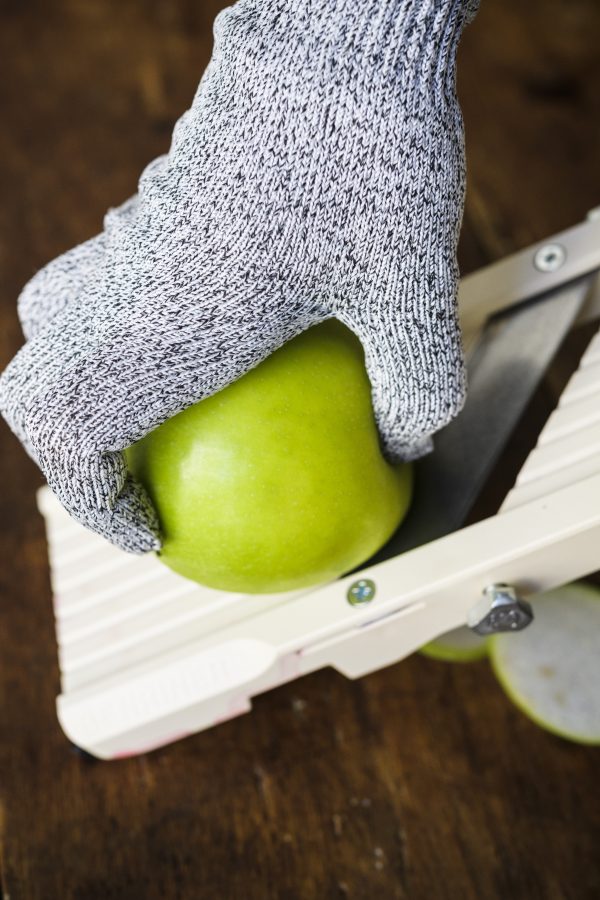
Safety First: We like using a hand guard when possible, but for even more precaution, we also wear a cut-resistant glove when slicing. Look for one with a snug fit.
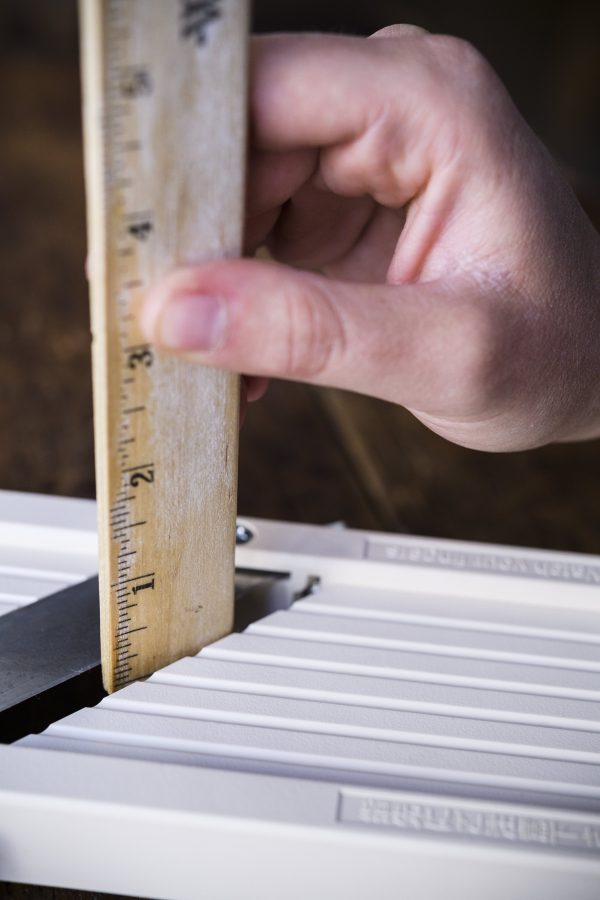
Set Up: For models without blade settings, use a ruler to measure between the blade and the edge of the mandoline, then make a test slice and measure its thickness.
Shapes & Sizes
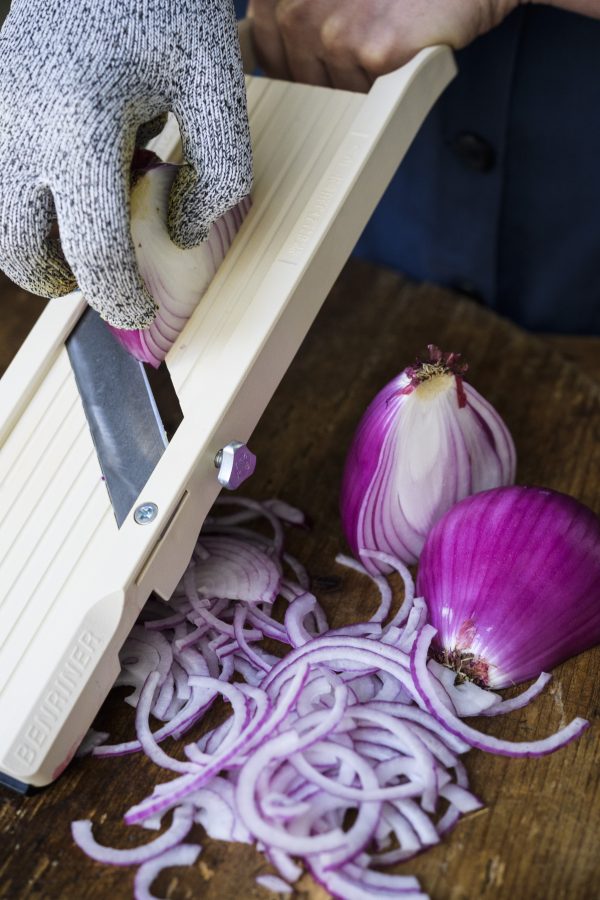
Alliums: To slice a peeled onion into rings, trim off the stem end to create a flat surface but leave the rest of the onion intact. For half-rings, halve it lengthwise after trimming.
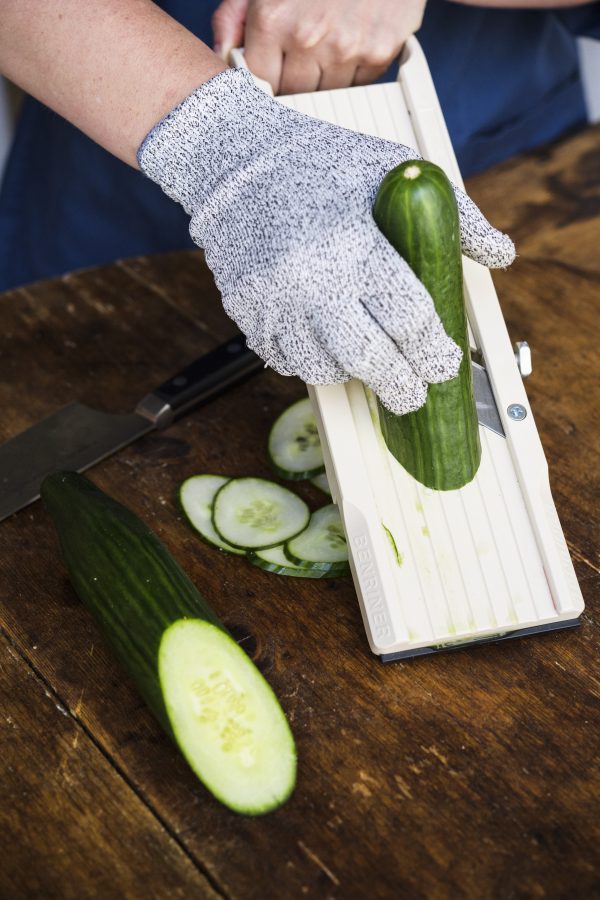
Bias Cut: To slice something on the diagonal, first cut the item in half at a 45-degree angle on a cutting board, then slice both halves on the mandoline.
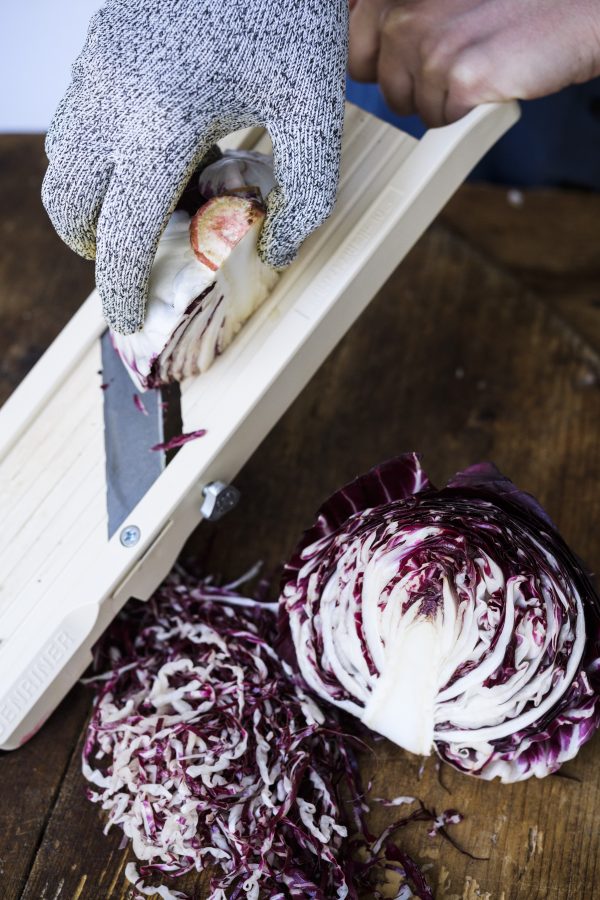
In Shreds: To shred firm heads of leafy vegetables, first evaluate if it’s necessary to cut the head into halves or quarters. Hold the piece by its base, then slice against the grain to create fine shreds.
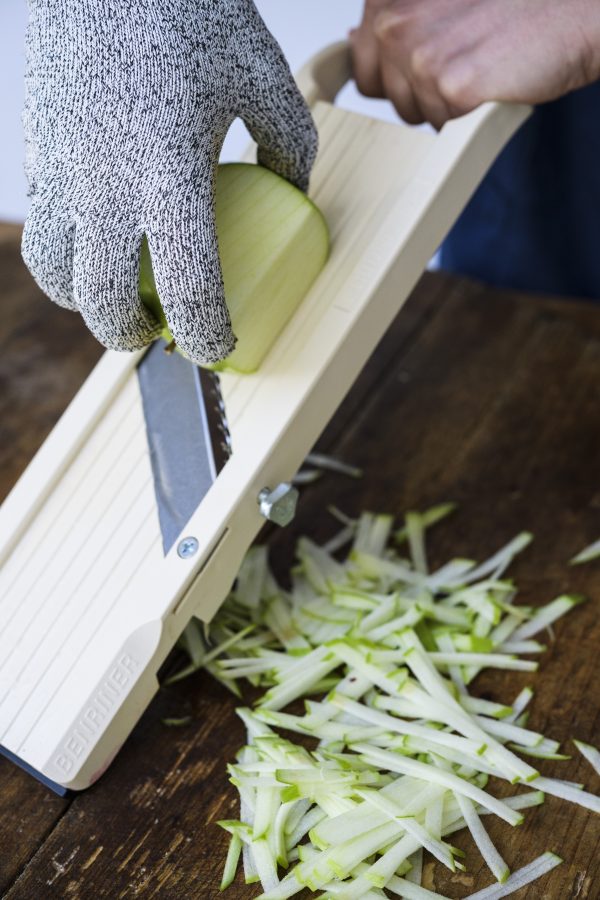
Matchsticks: We found the julienne blades included with some models work best on items with significant water content, such as apples or onions. Avoid firm vegetables like celery root and carrots.
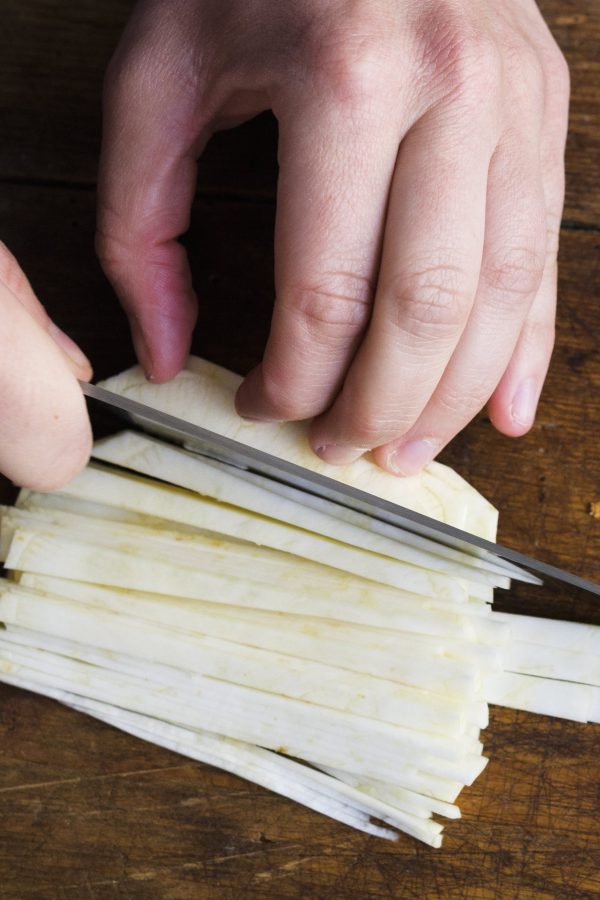
Planking: Even for models without julienne blades, the mandoline can make matchsticks easy. Slice into thin planks, then stack the planks and use a chef’s knife to cut them lengthwise.
Related Recipes
September-October 2018

Sign up to receive texts
Successfully signed up to receive texts!
We'll only send our very best offers - Like a $15 store credit to start.
By entering your phone number and submitting this form, you consent to receive marketing text messages (such as promotion codes and cart reminders) from Christopher Kimball's Milk Street at the number provided, including messages sent by autodialer. Consent is not a condition of any purchase. Message and data rates may apply. Message frequency varies. You can unsubscribe at any time by replying STOP or clicking the unsubscribe link (where available) in one of our messages. View our Privacy Policy and Terms of Service.

